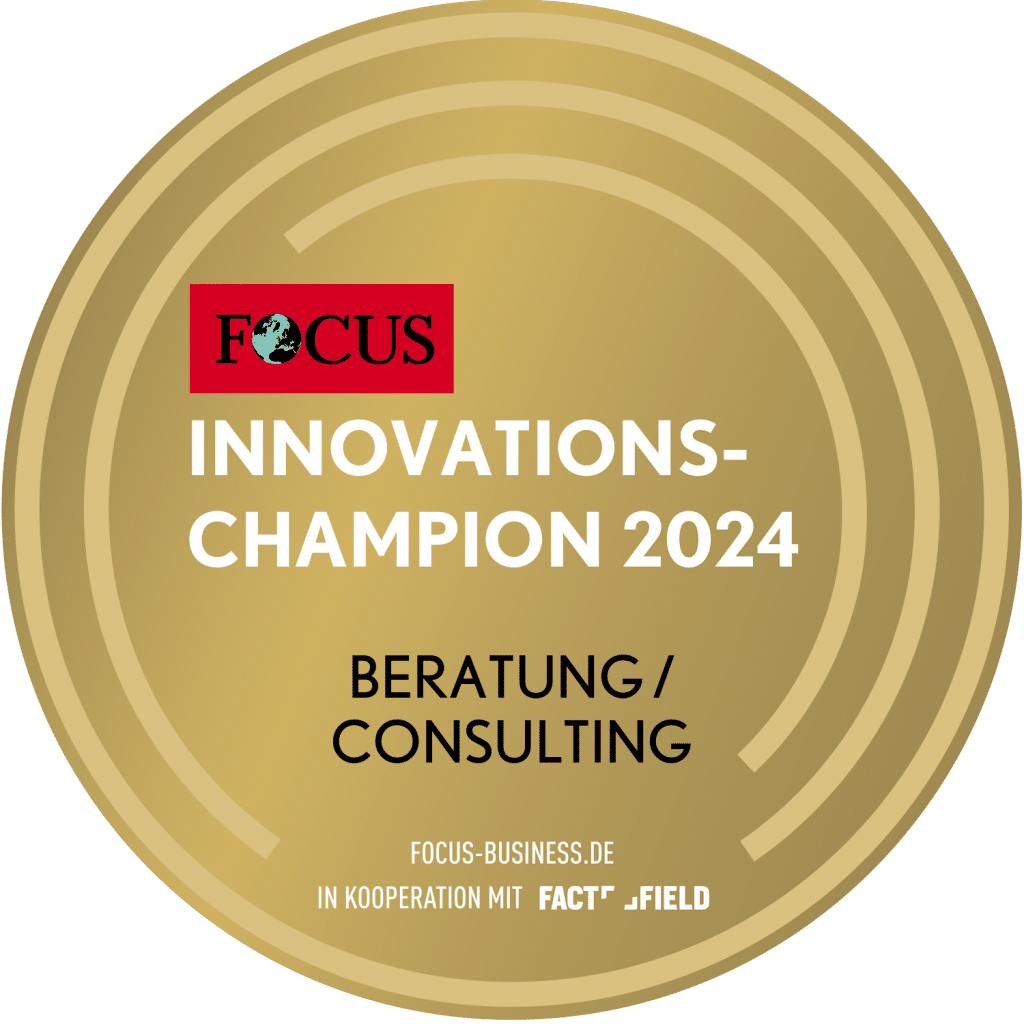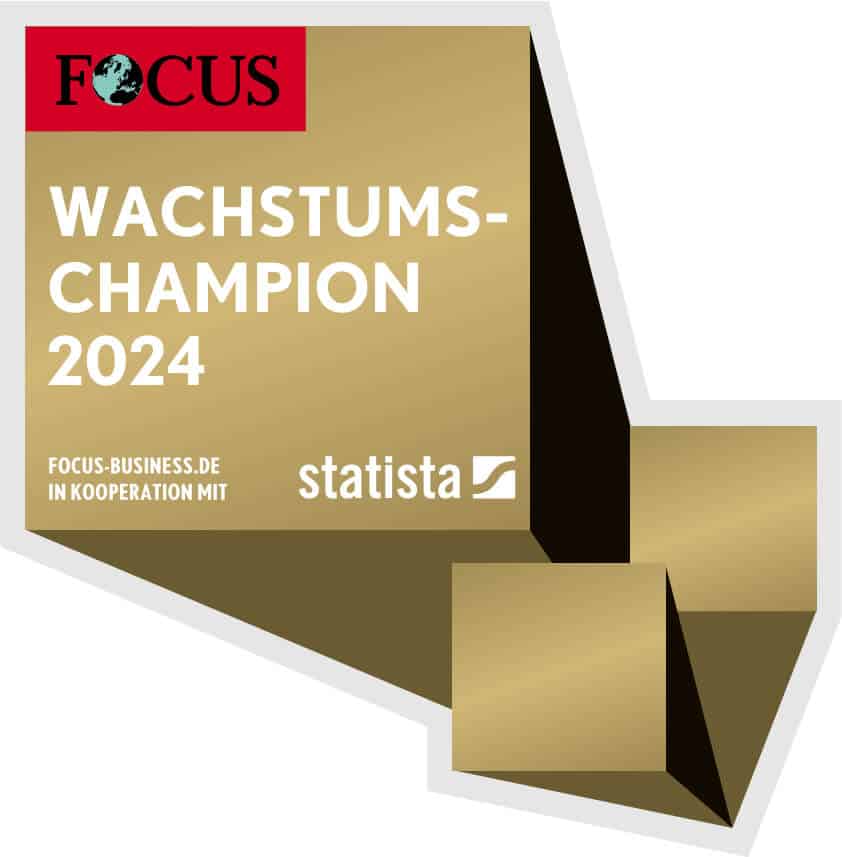Nowadays, companies compete on the basis of customer experience! However, very few companies understand how to correctly recognize their customers' expectations and derive value-enhancing solutions from them. Are you one of the successful companies that have found ways out of this customer experience dilemma and are taking advantage of the opportunities offered by customer-oriented business models? Read and learn in this and other TCI blog posts how you can proactively manage customer experience - the experiences of your customers - by understanding and at least fulfilling the expressed and hidden expectations and thus inspiring your customers. In the following, we will focus in particular on the customer experience dilemma and how your company can succeed in resolving it by learning to understand customer expectations and taking responsibility for them.
Customer experience: understanding and fulfilling customer expectations
When the customer makes you or your business the center of what they do in your solution area,
you have achieved customer centricity.
~ John Stanhope
Jerry Gregoire, former CIO of Dell and PepsiCo, predicted a good 20 years ago that companies would compete on the basis of customer experience (CX for short) in the future. The expectation of the 1990s has now become reality. However, very few companies understand how to correctly identify their customers' expectations and derive value-enhancing solutions from them. And the hidden and unspoken expectations are generally not looked for at all. Very few of the non-obvious expectations are identified. Henry Ford once said: "If I had asked people (customers) what they wanted, they would have said faster horses..."
Industry boundaries are shifting and competition is intensifying. More than 90 percent of customers question their next purchase decision with a company after a single negative service experience. And two thirds of customers subsequently change their supplier. To the same extent, the possibility of differentiating oneself from the competition in the long term through the product is decreasing. These are the results a study from 2011which have been published in various other studies by, for example Forbes, Harvard and Oracle were confirmed.
The customer experience encompasses far more aspects
Many companies know that it is no longer enough to compete on the basis of products or services. McKinsey has published a CX compendium from 2016 The company has shown that it is at least as important for organizations how the customer is supplied as what it offers the customer.
Product functions and features can be easily copied and imitated at any time. And the current innovation from company A) will be surpassed tomorrow by the next innovation from company B). The emotional relationship or the exclusive and personalized experience of a customer can only be imitated and compensated for with difficulty by the competition. This competitive advantage is sustainable.
Companies that make it easy and natural for their customers to communicate with them in a positive way are gaining ground in terms of competition. Through customer satisfaction, companies ensure that their customers do not actively look for alternative delivery options. Customer loyalty is only achieved through Customer enthusiasm generated.
The success of a brand is determined by the customer experience. And this customer experience is represented by the corporate culture practiced by all employees. Successful companies adapt their processes, the Corporate culture and mindset We are constantly adapting to customer expectations and continuously developing our level of service. The bottom line is that customers, the company and employees all benefit from this. The aim must be to surprise and delight customers with unexpected service. Only enthusiastic customers will recommend the company to others and can be retained in the long term. Customer enthusiasm leads to customer loyalty.
Customer experience: definition and lifecycle
When does customer experience begin and when does it end? For many companies, especially manufacturing companies in the B2B environment, CX starts with delivery and installation. The real lifecycle of the customer experience results from the definition of CX.
CX Definition
A summary of the various definitions of customer experience could go something like this:
"The customer experience is the sum of all experiences that a customer or buyer has with a company that offers services or goods. This experience is valid for the duration of the customer-supplier relationship established between the two parties. CX begins with the first contact of the relationship and ends with the last contact or the end of the lifecycle of the last product or service delivered by the supplier."
Conclusion for the customer experience dilemma
According to this definition each department of a company is the customer experience that has customer contact! Customer experience therefore does not begin with delivery or installation, but much earlier with the first contacts during the entire sales funnel, as soon as the customer has a conscious or unconscious need: Conversations in which potential customers about product developments are informed (e.g. at trade fairs) or involved in them (e.g. through surveys) - start of the "buy" phase. And customer experience ends when the last product is decommissioned, sold or scrapped by the respective customer - the end of the final "use" phase.
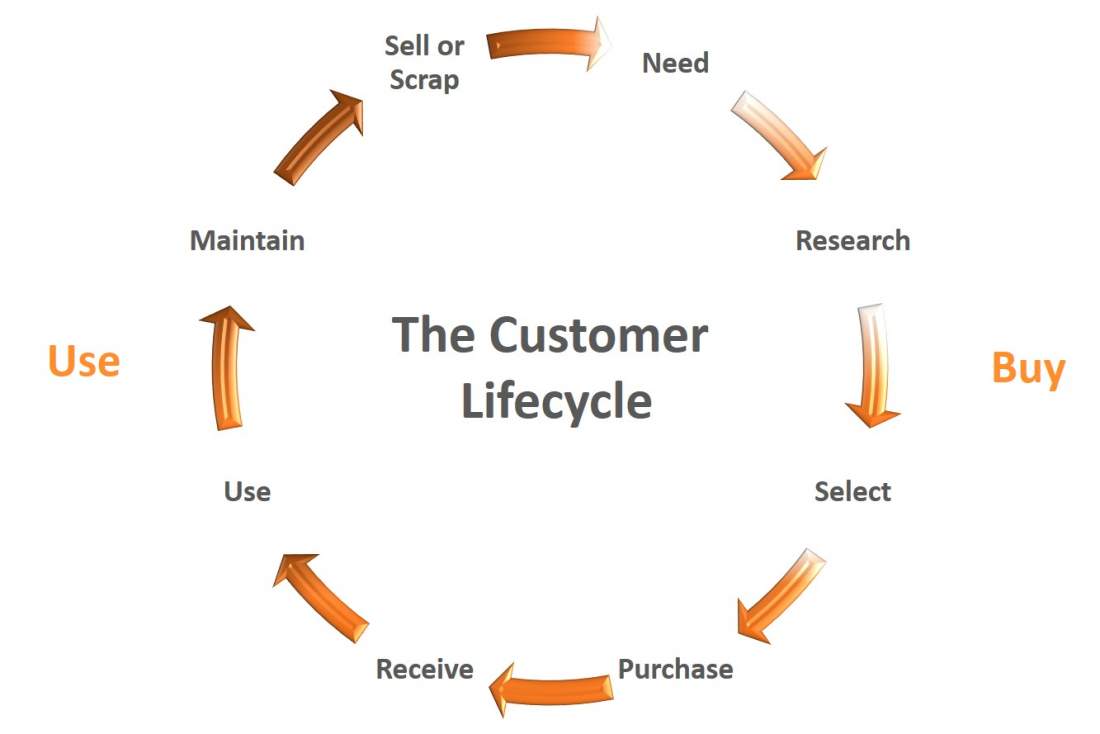
The CX responsibility
Responsibility is not divisible. If almost all departments in a company influence the customer experience, which department should have overall responsibility for CX? Marketing? Sales? Service? Or...? There are reasons for or against each area.
Considering the product life cycle and the points of contact that a customer has with the company during this cycle, the service or after-sales area is an obvious choice:
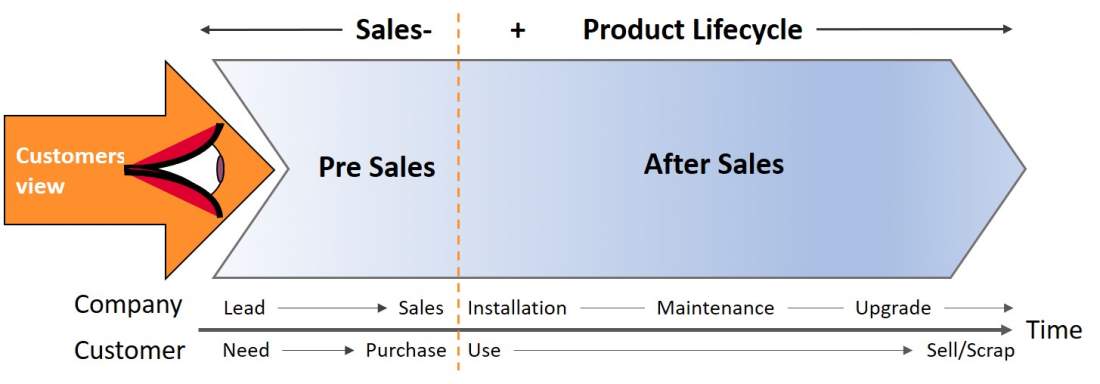
Customer Service shouldn't be a department; it should be the entire company.
~ Tony Hsieh, CEO Zappos.com
Achieving a living corporate culture for customer experience requires a corresponding mindset from every employee, starting with the CEO. In my experience, it is often top management that struggles with this cultural shift from product-centric to customer-centric.
It must be the goal of the company and every employee to transform an anonymous understanding of the customer into a personalized and emotional customer relationship. To achieve this, service strategies with a customer focus must not just pay lip service. The endeavor to create positive customer experiences must not only be anchored in corporate strategies: it must be anchored within the anchored top-down corporate culture become.
Unfortunately manufacturing companies in particular fail with branded products This transformation from product-centric to service-centric or customer-centric. Many remain centered on their product and try to map customer needs from there. However, customer centricity requires a company to be prepared to abandon its previous business model without reservation with the next innovative idea that is derived from customer expectations!
Customer centricity is therefore one of the topics that we will also discuss in detail in one of the following articles. Please also read the following parts of this article: From reactive to customized: customer enthusiasm through personalized solutions and What customer-centric thinking and acting really means.
Your opportunity: How to learn to understand customer expectations
Customer centricity and service orientation generate competitive advantages, customer loyalty and thus profitable growth. Are you already one of the successful companies that make use of these opportunities offered by customer-oriented business models? Or would you like to make greater use of these opportunities to increase growth and profitability in the future?
We would like to invite you to discuss with us how you can make the most of this opportunity. We are available for an initial, non-binding discussion at your premises. Make an appointment with us.
To gain an insight behind the scenes, you will find our current image film embedded here:
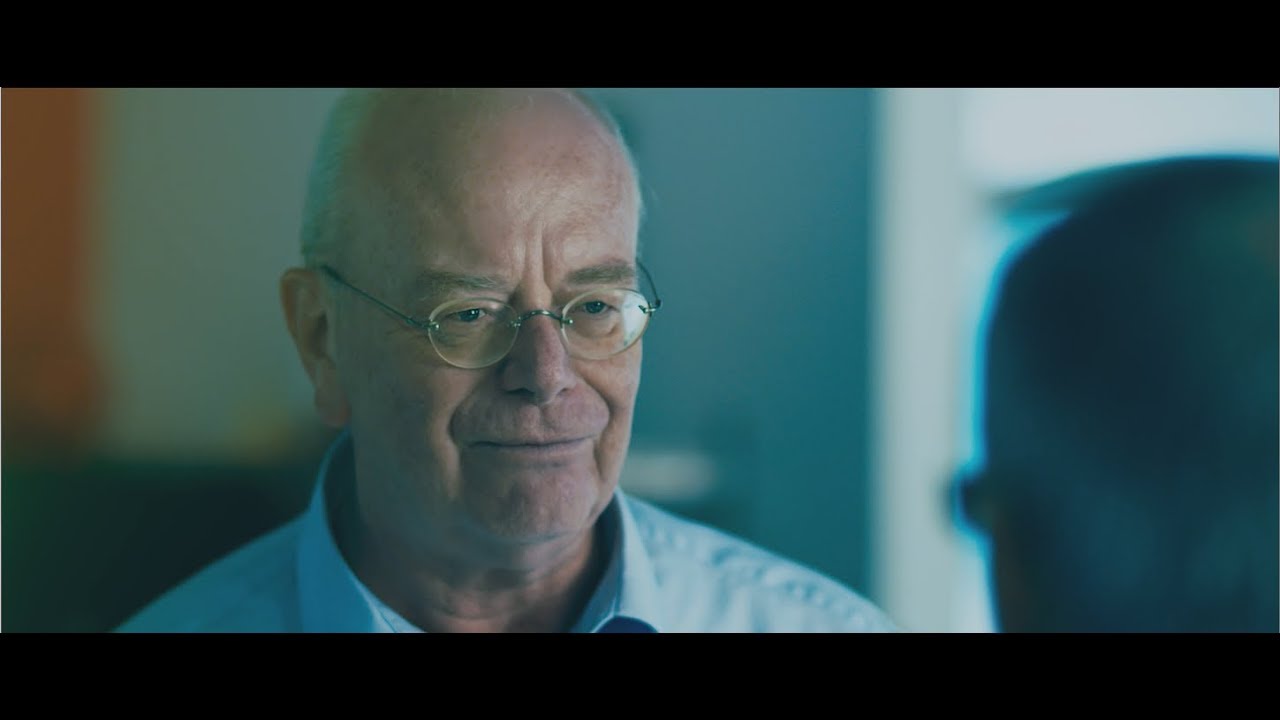
Mit dem Laden des Videos akzeptieren Sie die Datenschutzerklärung von YouTube.
Learn more
Further information can be found at https://www.tci-partners.com/de.
Or come to our symposium "Service 4.0 - Digitalization drives Customer Service Excellence" on 17 September 2018 at the Schlosshotel Monrepos in Ludwigsburg. Our invitation-only event for managers who recognize the requirements and challenges of customer centricity in the face of increasing digitalization and want to successfully address them in their company. Further information can be found directly on the TCI news page and in the event flyer.
—
*See also: "Understanding Customer Experience Throughout the Customer Journey".
(Cover image: © artpodporin | fotolia.com)

